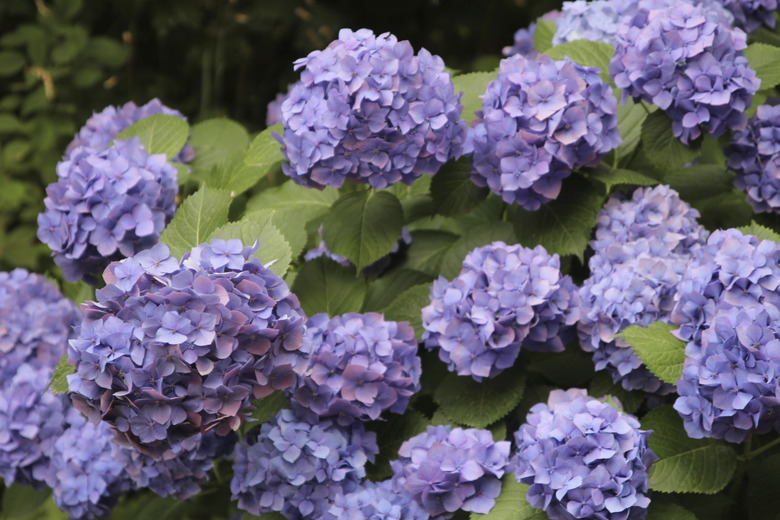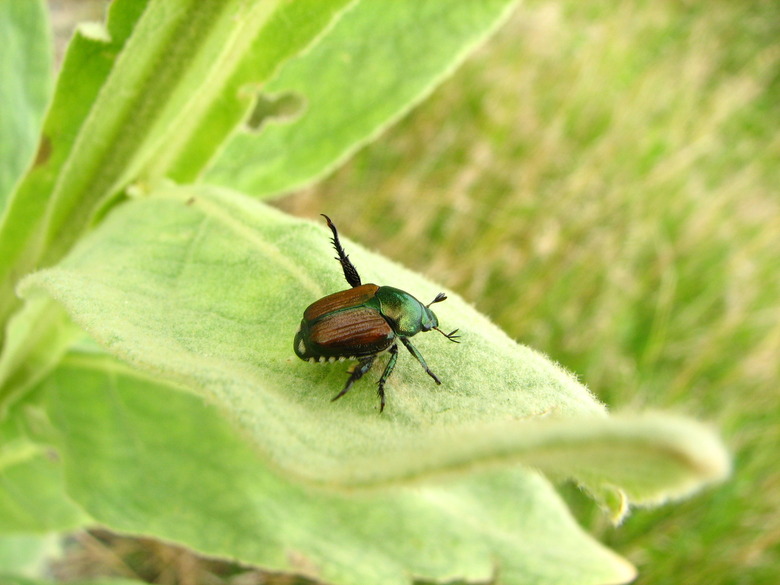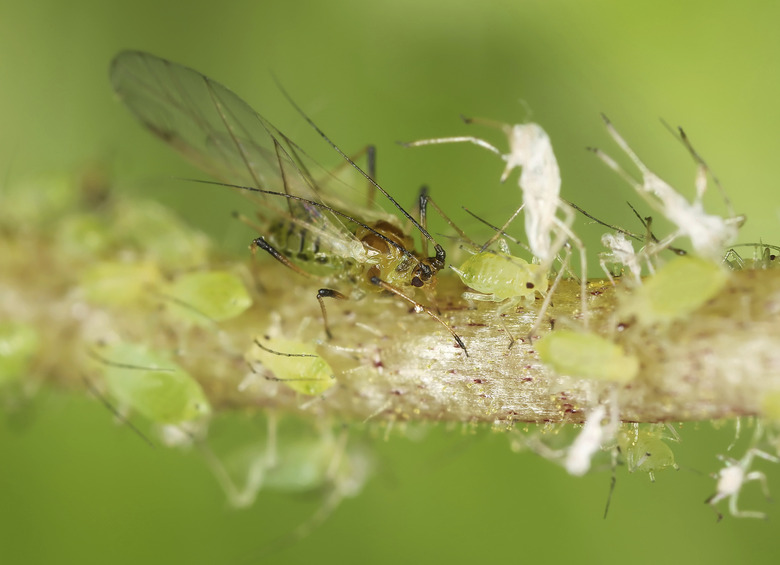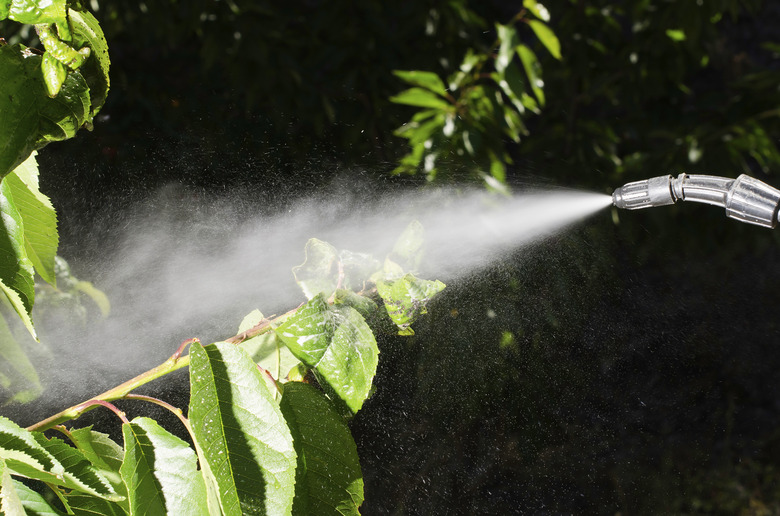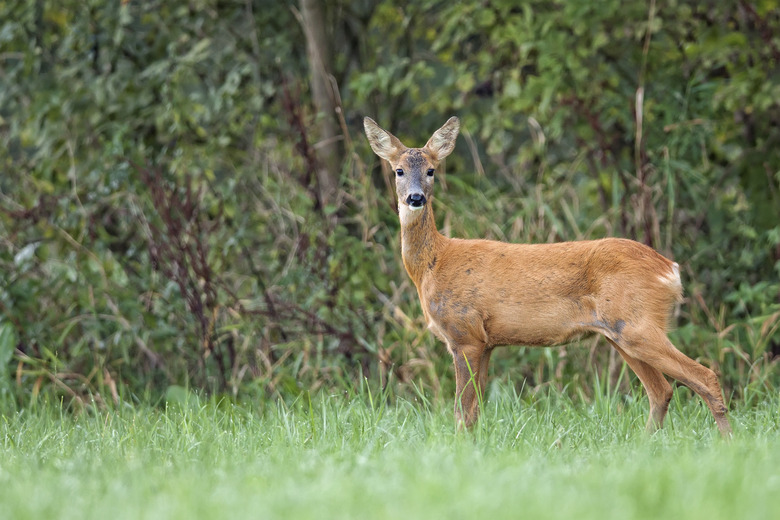What Is Eating My Hydrangeas?
Valued for their showy displays of pink, white, blue or purple flowers gathered into large clusters at branch ends, hydrangeas (Hydrangea spp.) provide reliable garden color from early to midsummer. Large, deep-green leaves grace the rounded shrubs that reach 5 to 15 feet tall on five of the species, with climbing hydrangea (Hydrangea anomala subspecies petiolaris), hardy in U.S. Department of Agriculture plant hardiness zones 4 through 7, reaching as much as 80 feet tall. Although hydrangeas are usually simple to care for and pest-free, a few invertebrate and vertebrate pests feed on them.
Beetles
Adult rose chafers and Japanese beetles eat hydrangea leaves and flowers, with Japanese beetles preferring oakleaf hydrangea (Hydrangea quercifolia). Rose chafers are reddish-brown beetles that are about 1/3 inch long and have yellow, thick hairs on their wing covers. Japanese beetles are 3/8-inch-long, green, iridescent beetles with coppery brown wing covers. Hand-pick adults of both kinds of beetles in early summer as soon as they appear, and drop them into a container of soapy water, which kills them. Remove leaves they fed upon; otherwise, those leaves will attract more beetles. Oakleaf hydrangea is hardy in USDA zones 5 through 9.
Sap Pests
Sap-feeding insects, including tarnished plant bugs and aphids, cause malformed, stunted new plant growth. Mostly green to brown and 1/4 inch long, tarnished plant bugs inject saliva as they feed. Remove their overwintering sites, such as leaves and weeds, to control the bugs' spring population. Aphids are small, usually wingless, green, brown, yellow or black insects with soft bodies. Green peach and melon aphids attack leaf undersides and tender stems. Monitor your plants carefully for aphids as the weather warms in spring, and hose off aphids with strong streams of water as soon as you see them. Encourage natural aphid predators, including green lacewing larvae, ladybugs and their larvae, and syrphid fly larvae. Discourage ants, which distribute aphids to uninfected plants, where they tend them for their sweet secretions.
Hydrangea Leaftiers
If you notice leaves tied together over hydrangea flower buds, the culprit is the brown-headed, 1/2-inch-long, green caterpillar called the hydrangea leaftier. The leafy enclosure shelters the caterpillar, and the foliage turns brown and dies. For light infestations, break open the tied-up leaves, and remove and destroy the caterpillars. When an infestation is heavy, spray the hydrangeas with a freshly made Bacillus thuringiensis solution that contains 1 tablespoon of Bacillus thuringiensis per 1 gallon of water, coating both sides of the hydrangea leaves. Apply the mixture as soon after the caterpillars hatch from eggs as possible. Shake the sprayer frequently during application to keep the product's ingredients mixed. Spray the leaves again every five to seven days while the caterpillars are active, and reapply the spray after heavy rain.
Vertebrate Pests
The Alabama Cooperative Extension System lists oakleaf hydrangea as being especially tasty to deer. Rutgers University considers five hydrangea species to be occasionally severely damaged by deer: bigleaf hydrangea (Hydrangea macrophylla), climbing hydrangea, oakleaf hydrangea, panicle hydrangea (Hydrangea paniculata) and smooth hydrangea (Hydrangea arborescens). Bigleaf hydrangea is hardy in USDA zones 6 through 9, panicle hydrangea in zones 3 through 8 and smooth hydrangea to zones 3 through 9. Fences are the most reliable protection against deer. Woven mesh fences need to be at least 8 feet tall and firmly anchored to the ground. Rabbits cause moderate and heavy damage to oakleaf hydrangea. Fencing is the most effective rabbit control. Use chicken wire that has 1-inch-diameter holes, is at least 2 feet tall and is buried at least 3 inches deep.
References
- The Organic Gardener's Handbook of Natural Insect and Disease Control; Barbara Ellis et al.
- Missouri Botanical Garden: Japanese Beetle
- University of California Integrated Pest Management Online: Pests in Gardens and Landscapes — Hydrangea, Hydrangea Spp.
- University of California Integrated Pest Management Online: Pests in Gardens and Landscapes — Aphids
- Alabama Cooperative Extension System: Hydrangeas
- Rutgers University, New Jersey Agricultural Experiment Station: Landscape Plants Rated by Deer Resistance
- Missouri Botanical Garden: Rabbits
- University of California Integrated Pest Management Online: Pests in Gardens and Landscapes — Deer
